Your fur friend may spend time outdoors for one reason or another, whether he’s a farmer’s right-hand pupper or another kind of working dog. And while every pup loves fresh air, some breeds are better equipped for the great outdoors than others.
Check out the best outdoor dog breeds with us below!
Best Outdoor Dog Breeds: Key Takeaways
- While the vast majority of dogs should be allowed to live indoors with their humans (at least some of the time), many doggos love hanging out in the great outdoors.
- Most breeds that enjoy spending time outside exhibit a few common traits, such as large body size and an independent nature.
- A few of the dogs who most enjoy soaking up the sunshine and sniffing the breeze include Labs, collies, and huskies, but there are many other breeds that are also fond of the outdoors.
What Makes A Good Outdoor Dog?
The outdoors aren’t as kind and cushy as your couch, with the elements making life a bit trickier. There are also hidden dangers to consider (like coyotes or hawks) even when you’re in the suburbs.
With these factors in mind, the best attributes in an outdoor dog are:
- Large Size: Most large-sized breeds can handle the rigors of the outdoors, but small breeds are too at risk of animal attack or the cold.
- A Thick Coat: Areas that experience cold weather require a pup with a thick double coat for extended outdoor exposure. This inner layer of fuzz helps insulate your dog, making them well-suited for colder climates. Warmer climates are better suited for short-coated breeds that can withstand heat. You don’t want to leave huskies or Samoyeds, for instance, out in the heat all day.
- Adult Age: Adult dogs fare better alone outdoors than puppies, who not only can get into trouble, but also require ongoing socialization. Elderly canines should never be left outside unattended, either. Advanced age makes them more susceptible to injury and animal attack, while health conditions like canine arthritis are incompatible with extended outdoor time.
- Good Health: Only dogs in good health should be exposed to outdoor conditions for extended periods. A pup with a seizure or heart disorder, for instance, needs careful monitoring that cannot always occur in an outdoor setting.
- Average or Long Muzzle Length: Short-snouted (brachycephalic) dog breeds are not suitable for much outdoor time, especially if left unattended. They overheat quickly and should always be monitored when outdoors in warm temperatures.
- Self-Sufficient Personality: Some dogs are happy to entertain themselves, but others can suffer from separation anxiety if left unattended. This risks self-harm or other injuries to your pooch, especially if he tries to escape your yard.
While many will four-footers enjoy spending copious amounts of time outdoors, you don’t want to just banish your dog to the backyard for the bulk of his life.
Dogs are social creatures who need plenty of time to hang with their peeps! They’re true family members and should be treated accordingly.
Outdoor Dog Safety Tips
Daily exercise is great for your doggo’s physical and mental health, so it’s beneficial for him to enjoy some outdoor time.
That said, you need to make sure he’s safe while soaking up sunshine and fresh air. Some important safety measures to follow with your outdoor dog are:
- Make sure your dog is wearing identification. Just in case your four-footer wanders, it’s important to make sure he’s identifiable. A microchip is recommended, along with an ID tag secured to his collar. Remember to keep this information up to date (including your microchip’s data!) to ensure he makes it home okay.
- Fit Fido with a proper collar. Never leave your pooch unattended when he’s wearing a self-tightening collar. This includes slip collars, chain collars, prong collars, and martingale collars.
- Use parasite preventatives. Make sure your dog is current on his vaccinations and parasite preventatives — especially heartworm blockers. Mosquitoes and ticks transmit all sorts of nasty illnesses, like Lyme disease and ehrlichiosis.
- Use safety vests during hunting season. A high-visibility vest for you and your doggo is recommended if you’ll be hiking, camping, or just hanging out in the back yard in close proximity to hunters.
- Containment: If your dog must spend time outdoors unattended, make sure he’s properly secured by a dog-proof fence or in an enclosure like an x-pen so he can’t wander off. Secure containment will also protect him from things that may wander in, like other dogs or coyotes.
- Use a leash when exploring. If you’re hiking or meandering through wilderness areas with your pooch, a heavy-duty leash is a must.
- Provide your pooch with a proper shelter. If left unattended, your dog must have shelter that protects him from the elements. Not only is this the right thing to do, but it’s also the law in many jurisdictions.
- Make fresh water available at all times. Dogs should have access to clean, fresh water at all times. In colder months, this may require a heated water bowl to keep it from freezing.
- Be careful with food. You can feed your doggo outside, but you have to do so sensibly. Food should not be left out, as it can attract pests like flies, and it can spoil if exposed to rain.
- Provide stimulation and engagement. While your dog may love his outdoor adventures, it’s important that he still gets time with his family. He shouldn’t remain in the backyard at all times. He needs socialization with his humans.
The Best Outdoor Dog Breeds
With the tips mentioned above in mind, here are our picks for the best outdoor dog breeds.
1. Alaskan Malamute
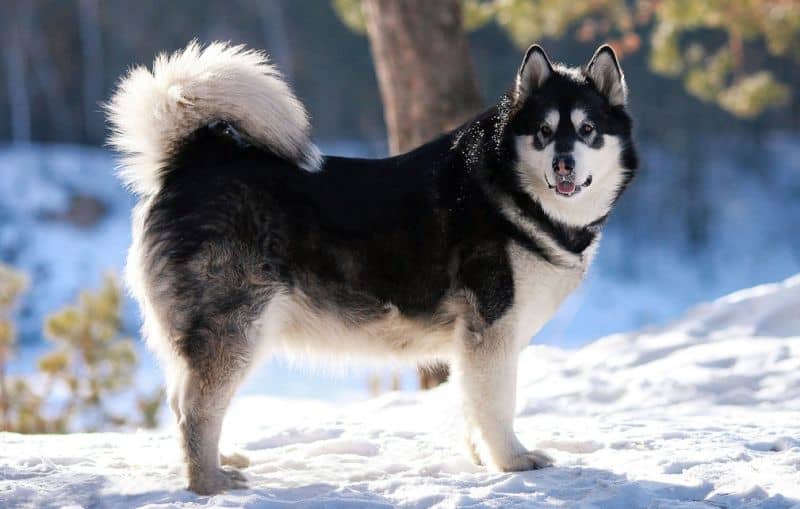
This handsome northern spitz thrives in cold weather. In fact, some owners struggle to get their malamute inside after a fresh snow since they love the playing in fresh powder so much.
This makes sense, as these large floofs were originally bred to pull sleds across the frozen tundra. He’s not the dog for warm climates, as he easily overheats and can be susceptible to painful hot spots.
Malamutes shed heavily year round, with two “blowing” seasons creating epic hair tumbleweeds. This ongoing shedding requires daily brushing to remove hair.
As working dogs by nature, malamutes also require daily physical and mental exercise to burn off energy, so one won’t be happy hanging out in a pen all day.
He can be stubborn and isn’t an ideal breed for novice owners.
Early training classes are recommended along with ongoing socialization before he gets too large to handle, which can come quickly as males can reach more than 85 pounds.
2. German Shepherd Dog
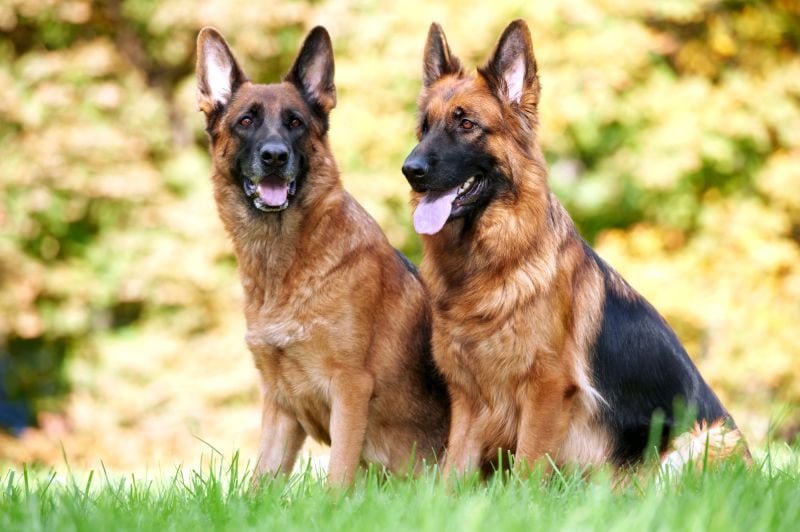
The German shepherd is an all-around worker who loves the outdoors. His sporty nature makes him a favorite dog breed around the farm and trail alike, and his double coat insulates him while he struts his stuff in chilly weather, but he doesn’t get too hot in the summer.
While he is equipped for the weather outside, he isn’t a dog that can be left alone for long. He’s what’s called “a Velcro dog” because he loves being with his humans.
In addition to a high-quality food, the German shepherd needs daily exercise to avoid destructive behaviors and regular brushing to strip his ever-shedding coat of trapped hair, so make sure you’re up to the task before bringing one home.
He’s also an incredibly intelligent breed that can be strong-willed. Early obedience classes are a must to harness this in a positive way or he’ll get into trouble.
3. Labrador Retriever
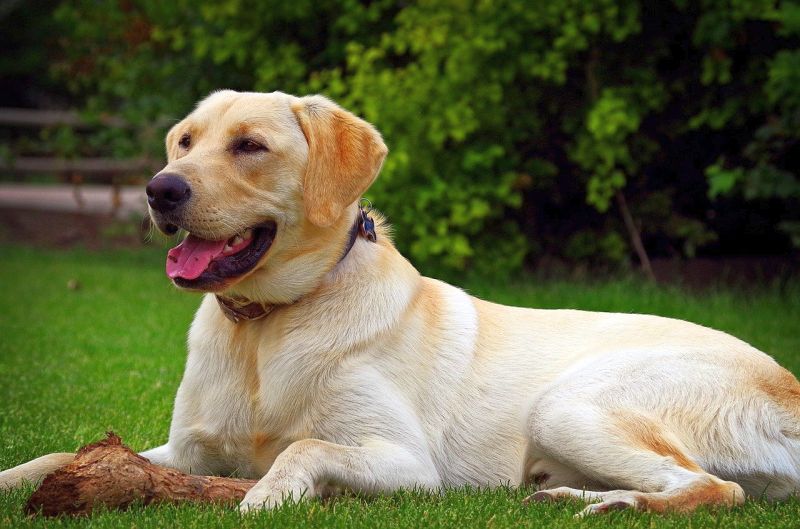
America’s favorite breed has a dense double coat that’s somewhat water-resistant, making him an excellent choice for an outdoor adventure buddy.
He can handle a bit of cold but isn’t a dog that should be left out in frigid temperatures. He’s a people-pleaser at heart and doesn’t mind some time to himself, but he shouldn’t be left alone for long periods or his sensitive spirit will begin to suffer.
Labradors were bred as bird hunting companions and need daily exercise to satisfy their near-constant desire to retrieve. He can be a heavy shedder, too, so invest in a good brush if you plan on introducing one to your fur family.
Since he’s so eager to please, the Lab is relatively easy to train, but he should undergo basic obedience training, especially if you want a well-behaved fur friend.
4. Rhodesian Ridgeback
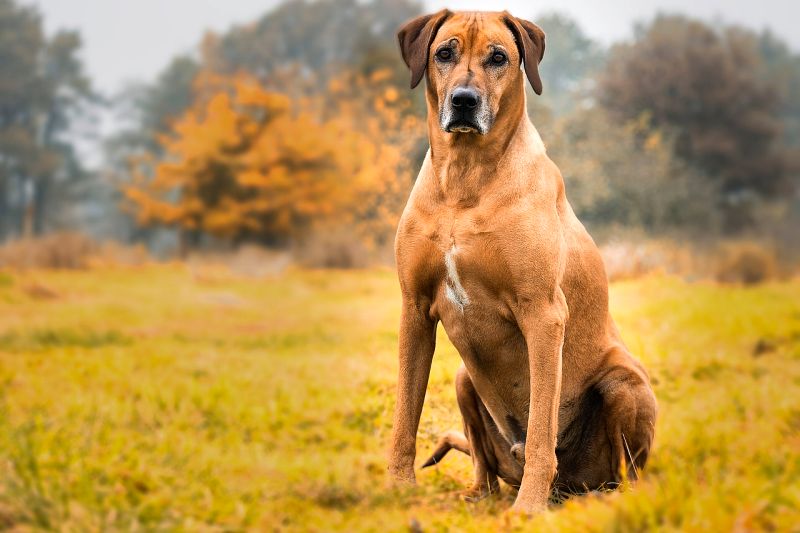
If you live in a warmer climate, the Rhodesian ridgeback might be the companion for you. He’s a tough breed that comes from the savannas of Africa and was originally used for hunting.
His short coat only sheds occasionally, so it requires little maintenance. He does, however, need daily exercise to remain healthy and happy.
Ridgebacks have strong prey drives and should never be trusted off-leash. Proper care should be taken to keep him contained, as he will bolt at the first sight of a squirrel (or even your neighbor’s Chihuahua).
He’s also a stubborn doggo and prefers to do things his way. This can make training a challenge, so he’s not recommended for beginner dog owners.
5. Australian Cattle Dog
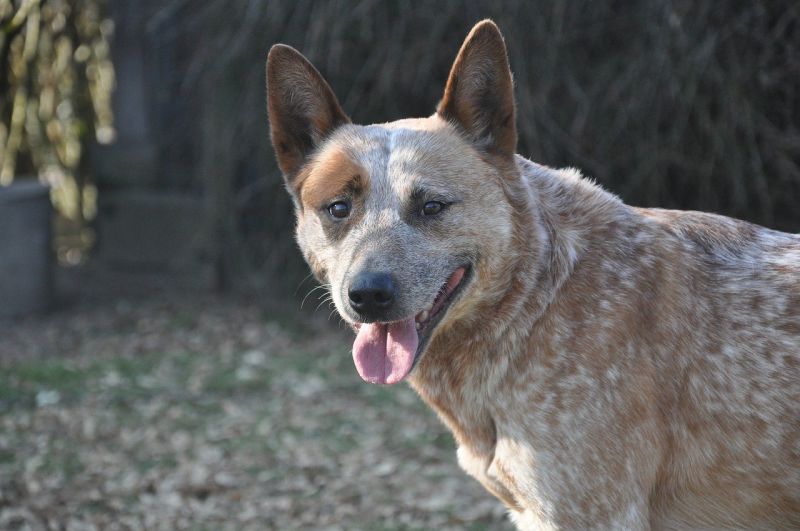
The Australian cattle dog is one of the hardest workers out there and doesn’t mind a run across the pasture, making him an excellent choice for an outdoor dog.
He’s scrappy by nature and can be reserved with new people, so make early socialization with people and animals a priority. And while the cattle dog is smart, he isn’t always a big fan of listening. Because of this, he’s not the best option for a newbie dog owner.
Cattle dogs have a double coat that works well with outdoor adventures and he only needs occasional grooming when he gets dirty. He does shed steadily, however.
He needs daily exercise to stay happy, with a doggy sport like agility being highly recommended if he’s not actively working livestock or performing some other work-like task.
6. Border Collie
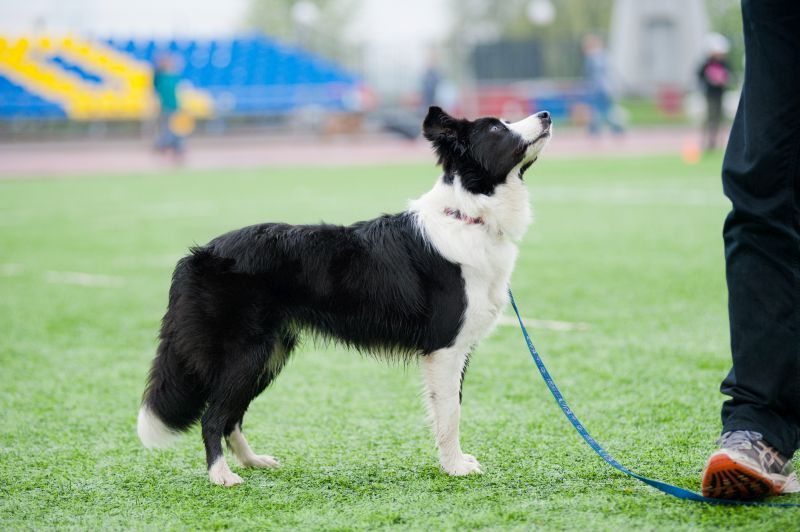
This medium-sized wonderdog is a farming phenom. Bred to herd livestock, border collies have seemingly bottomless gas tanks and will work endlessly to complete tasks.
The border collie is a dream dog for those who love the great outdoors, as he’s happy to swim, hike, jog, run agility courses, and more as long as he’s with his humans.
With that in mind, couch potatoes need not apply. A border collie needs plenty of daily exercise or he will become bored and destructive.
Border collies have weatherproof double coats, so they can handle outdoor time with ease. He’s a seasonal shedder, though you should brush him a few times a week to keep tangles at bay.
7. Norwegian Elkhound
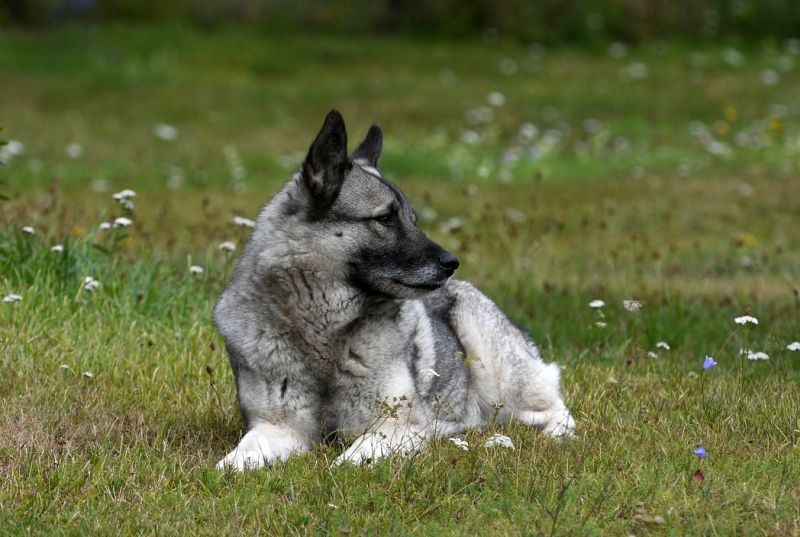
A stocky hunting dog with a clownish spirit, the Norwegian elkhound likes to do things his own way. Bred to withstand Norwegian winters, his thick coat acts as a buffer against the cold.
This wooly coat sheds heavily seasonally and needs weekly brushing to stay healthy. It also can cause overheating in warm weather, so don’t leave your elkhound outside in the summer for long.
Elkhounds are generally too smart for their own good and can be headstrong, so they’re not the pooch for a beginner. You should start obedience classes early. To keep this brainy pup happy, challenge him daily with games and toys.
8. Great Pyrenees
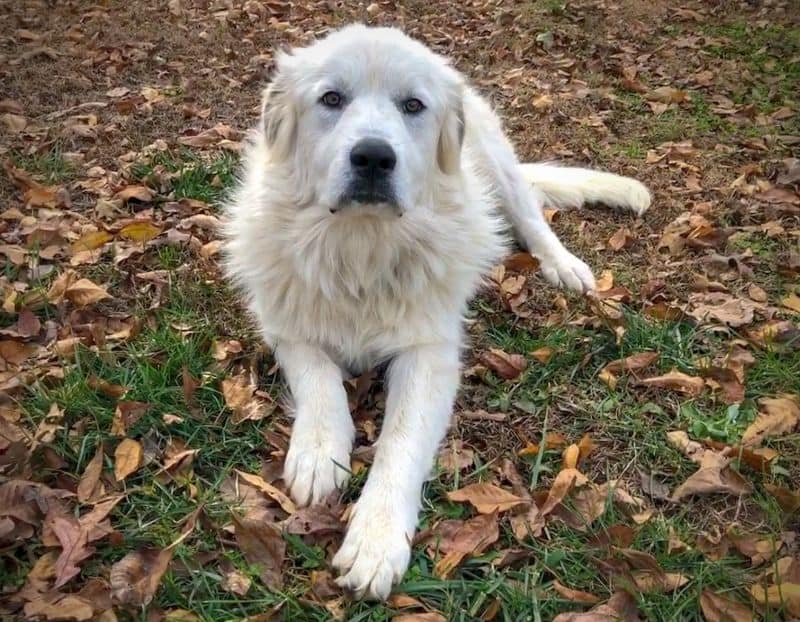
A large livestock guardian with a beautiful white coat, the Great Pyrenees turns heads everywhere he goes.
His double coat repels the elements, and he doesn’t mind cold weather one bit as he roams around the pasture with his flock. And while he has long hair, he only needs weekly brushing to keep his coat looking its best. He doesn’t need much exercise either despite his size.
Pyrs do require a patient owner, and aren’t ideal for people just starting out with dogs. They are very independent and have selective hearing, which can be frustrating.
Due to their size, training at an early age is a must. They’re also reserved with strangers, so make sure you start socializing your Pyr early.
9. Rottweiler
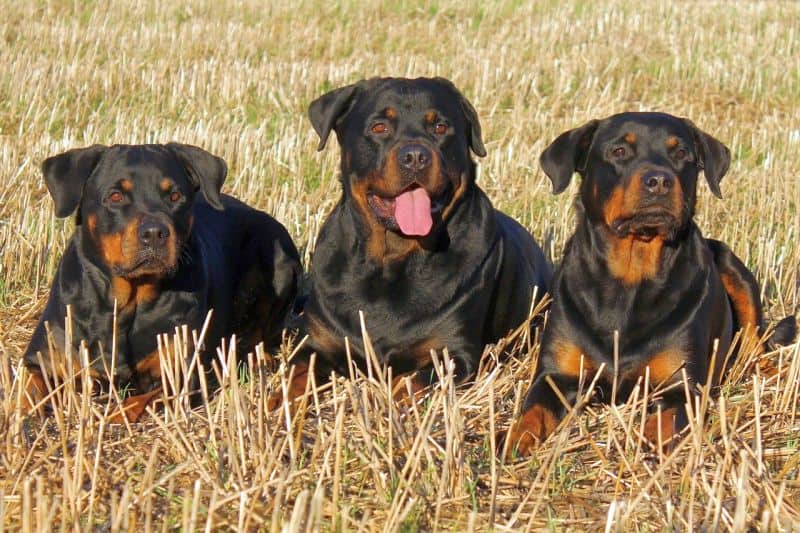
The Rottweiler is surprisingly athletic despite his large, boxy build. A German breed originally bred for working cattle, the Rottie is right at home outside, whether he’s swimming, running, or hiking the trail.
He has a fair amount of energy, so expect daily walks to be part of your life with a Rottie. He’s also a powerful pup, making obedience classes as a puppy mandatory along with frequent socialization to avoid issues.
Rotties have a double coat, insulating them from the cold. It sheds moderately year round (though shedding is heaviest during the spring and fall) and requires occasional brushing to strip away dead hair. While he can tolerate the elements, he’s not especially comfortable in temperature extremes.
Additionally, you can’t just stick a Rottie in the backyard and forget about him. He needs to be with his family to remain happy and be the best doggo he can be.
10. Akita
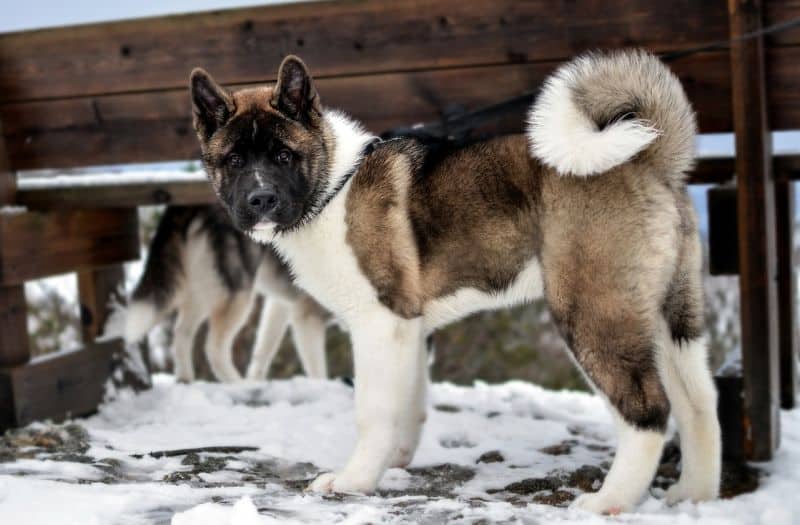
Occasionally tipping the scales at over 100 pounds, the Akita is a handsome working breed from Japan. His large size comes with a matching stubborn streak, so he isn’t the dog for a novice owner.
Despite being so large, he requires only moderate exercise, with a walk a day keeping him content. His thick fur keeps him cozy in the snow but can lead to overheating if he’s left outside in the heat.
He sheds this fur seasonally and it can be heavy, so prepare yourself for some epic hair tumbles around the house or backyard.
Akitas must start training early and should be socialized to avoid people and animal aggression since he’s naturally aloof and protective. With this in mind, he should never be left alone for extended periods, as he’s happiest when he’s with his people.
11. Weimaraner
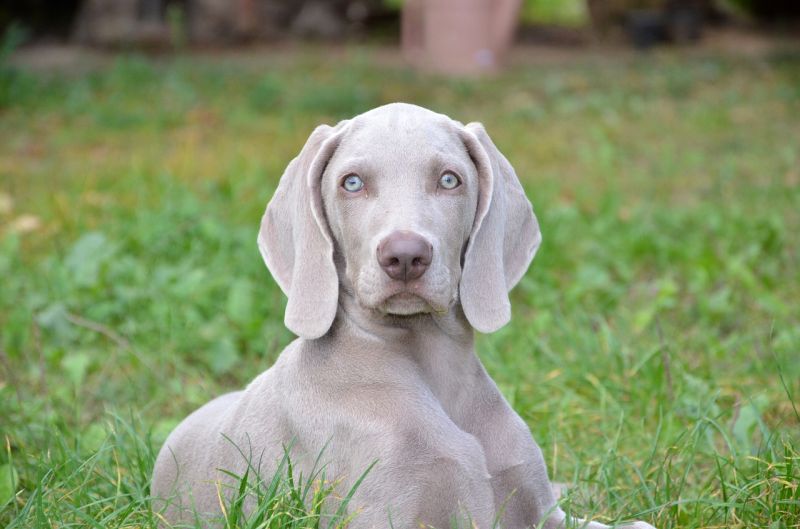
A sporting group favorite beloved for his striking gray coat, the Weimaraner is a German gun dog who loves anything outdoorsy.
His short coat requires little grooming, and he won’t overheat easily in hot weather. That said, he’s not a winter-weather breed and shouldn’t be left alone for long whether it’s hot or cold. He loves being with his owner and dislikes feeling forgotten.
Weims are all-around athletes, which works out nicely if you’re an active person that loves going on adventures.
Daily exercise helps him thrive, whether he’s jogging with you around the block or flushing game in the field. He’s a quick learner, too, which makes him easier to train than most breeds.
12. Bernese Mountain Dog
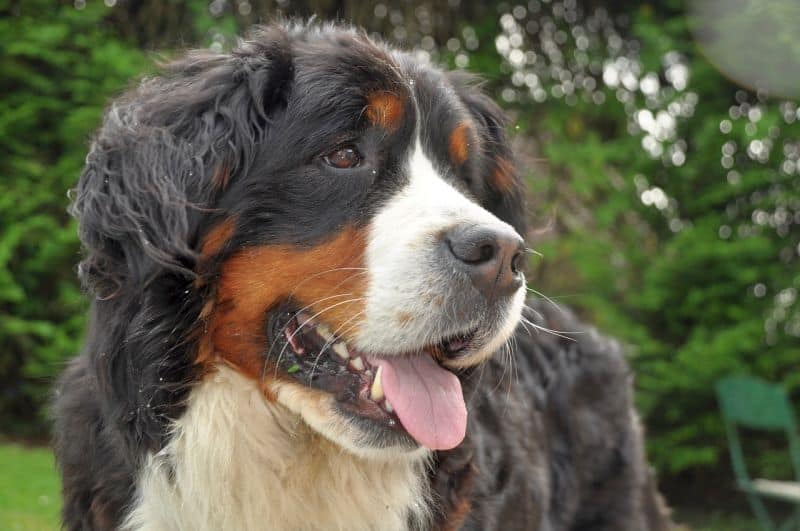
This cold-weather cutie originally comes from Switzerland, where he pulled carts and performed other odd jobs around farms.
Berners are one of the friendliest breeds and eager to please, which makes them a pretty good choice for many first-time owners. But due to their large size, early training is needed.
The Bernie prefers to be in his family’s company, and isn’t the breed to leave alone outside for long or he’ll come up with something to do (that you may not like!) Daily exercise is recommended, and he’s an excellent hiking buddy.
His thick coat tackles winter weather with ease, but he sheds frequently and needs regular brushing to prevent tangles. He’s not a dog for warmer climates, and special care should be taken with drying in wet weather to prevent painful hot spots.
13. Anatolian Shepherd
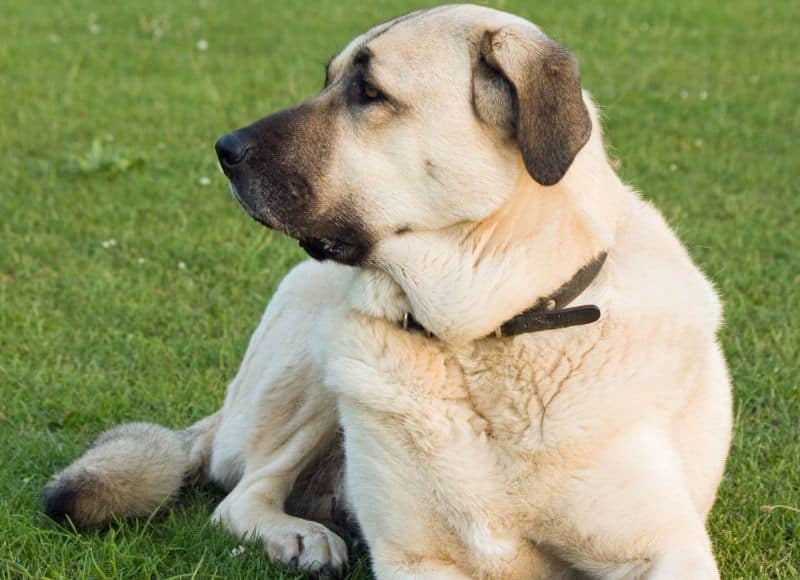
This mighty livestock guardian is the king of his flock. The Anatolian is a rough and tumble breed who is large enough to handle his own.
He’s aloof by nature and can be at risk of being overprotective if not socialized from an early age. Because of this, he shouldn’t be left alone for long periods.
His size and independent nature can make him a challenge to train too, so he’s not the dog for someone seeking their first pup. Early, consistent training is a must to ensure a well-rounded Anatolian.
The Anatolian’s dense coat protects him from the elements and only requires a weekly brushing to keep it looking great.
He sheds heavily twice a year, but other than that, he’s low maintenance in the grooming department. He also only needs moderate exercise despite his size, with a long daily stroll typically meeting his needs.
14. Collie
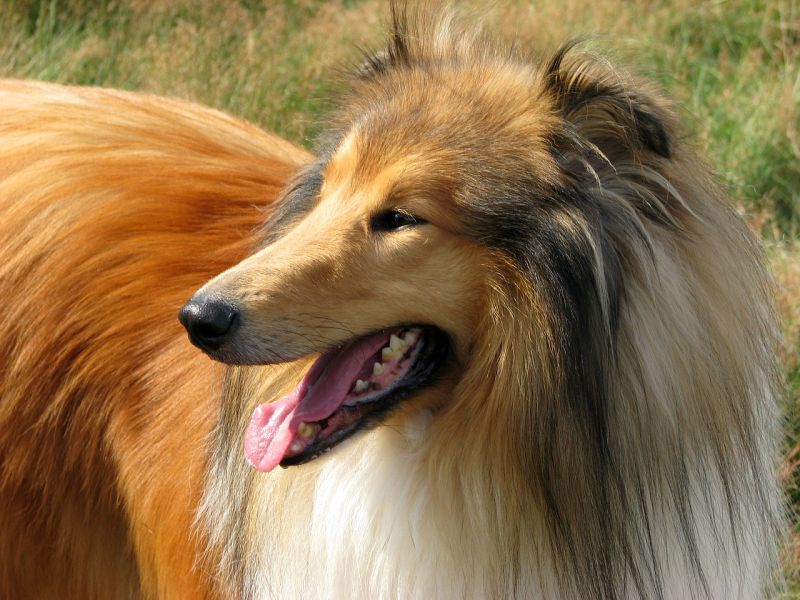
The quintessential country dog (when they’re not staring in movies), collies are made for roaming the pasture.
This herding dog breed loves having a job to do, and since he’s so friendly, he loves it more if it’s with his human. This makes him an excellent pick for agility, as the sport burns off his excess energy while he gets to spend time with you.
Collies come in a rough and smooth coat variety, with both containing an undercoat to keep them warm in chilly weather. Smooth coat collies only require occasional brushing to remove shedding hair, but rough coats need frequent grooming to prevent matting.
15. Vizsla
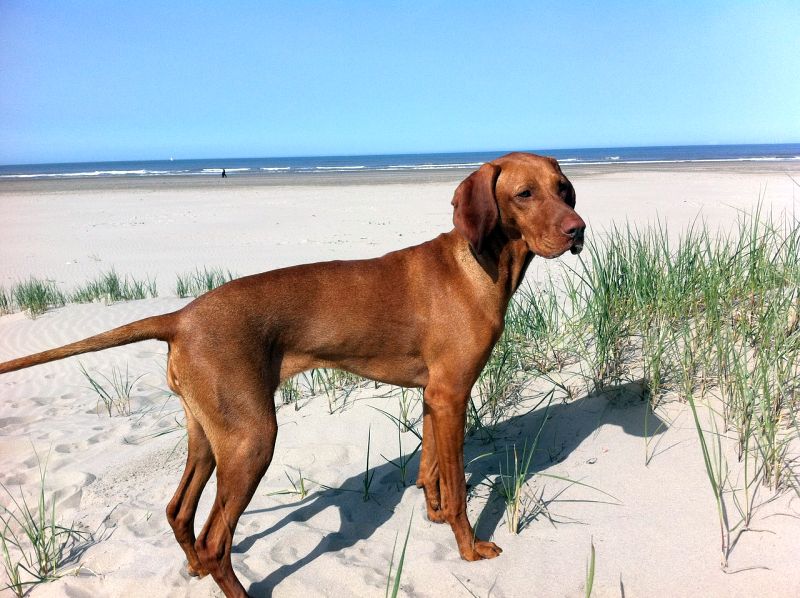
Originally bred as a hunting companion, this short-coated Hungarian breed excels in warm weather.
The vizsla is a natural-born athlete who’s eager to please, which makes him an excellent companion for camping and hiking.
He’s a people-lover at heart, so he shouldn’t be left alone for long periods. His friendly personality also means he’s sensitive, making positive training methods a must.
Vizslas and most vizsla mixed breeds require little grooming thanks to their lack of an undercoat, but special care should be taken in colder weather to keep him warm. His floppy ears need attention too, as they can be prone to ear infections if not kept clean and dry.
16. Australian Shepherd
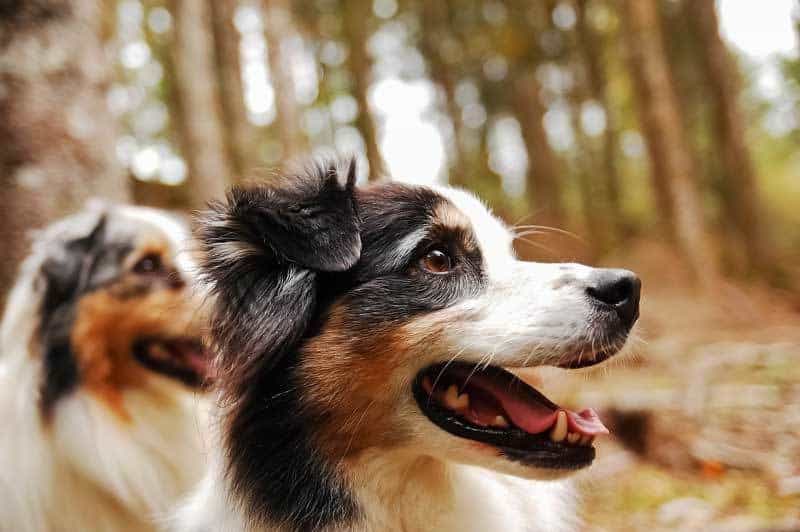
The Australian shepherd is one of the top breeds used around the farm, so he’s no stranger to the outdoors. He’s a tough breed with an endless work ethic, requiring daily exercise that pushes him mentally and physically.
He’s a smart doggo with a sensitive spirit, too, needing daily interaction with his humans or he’ll start acting out. He’s an all-star at agility and obedience, so if you have one of these beautiful dogs, check these activities out!
Aussies are also well-known for their waterproof coat, a medium-length mane that comes in many colors. This double layer coat sheds an average amount but does need weekly brushing to keep him looking his handsomest.
17. Siberian Husky
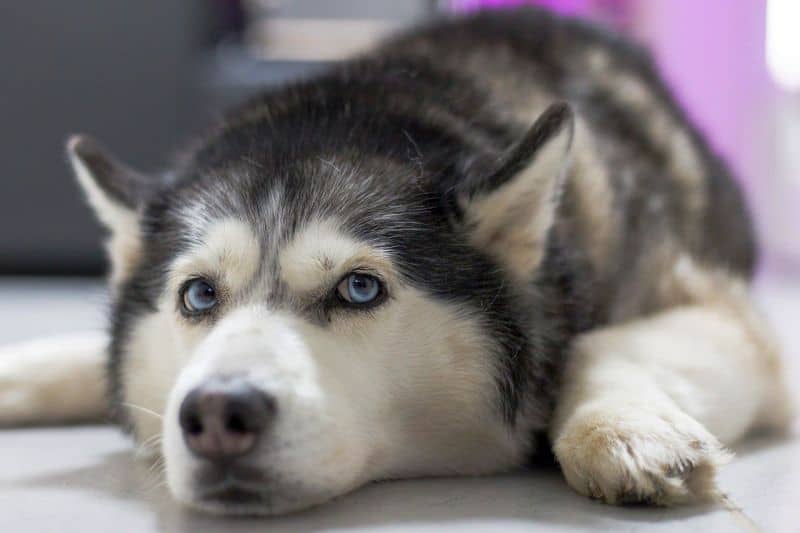
Like the malamute, the Siberian husky does best in cold climates. He loves the snow and got his start as a sled dog. This natural urge to work makes him one of the most active dog breeds, and he excels when given a job to do that uses his mind and body.
He isn’t a breed that can spend most of his time alone in the yard or he’ll get into heaps of trouble. He’s an excellent candidate for rally, obedience, and other active doggo sports.
The husky’s plush coat is striking to look at, but it’s also a lot of work to maintain. He sheds heavily year round with two coat blowing seasons making a mess of his environment. Invest in a quality dog grooming brush!
If you’d like a husky, and look into training classes early. While he’s a friendly pupper, he can be incredibly stubborn and too smart for his own good.
***
Do you have any of the breeds we listed? Do they love outdoor time too? Any others we didn’t mention? Let us know in the comments!


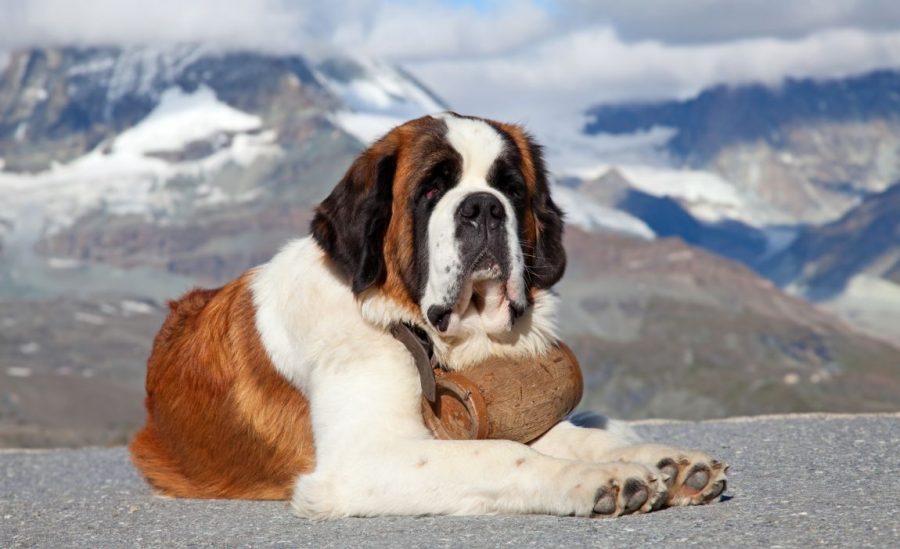


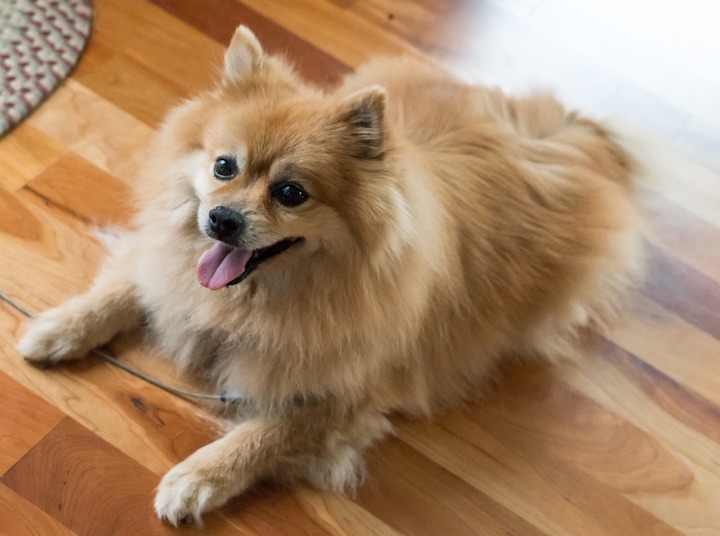
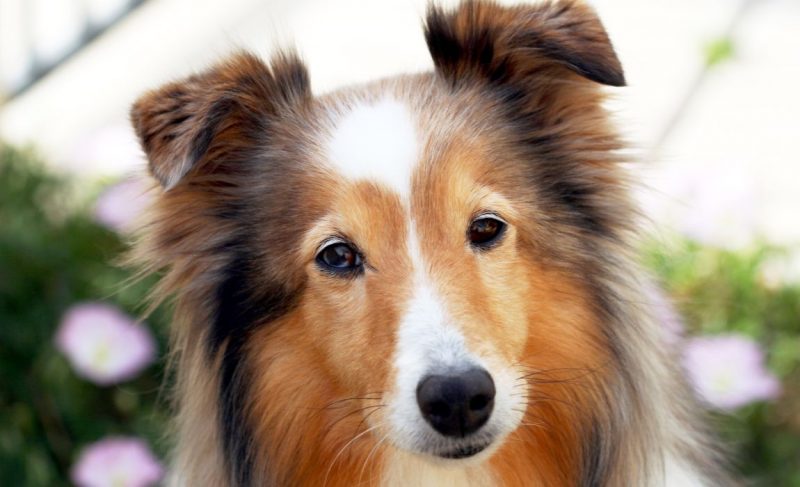
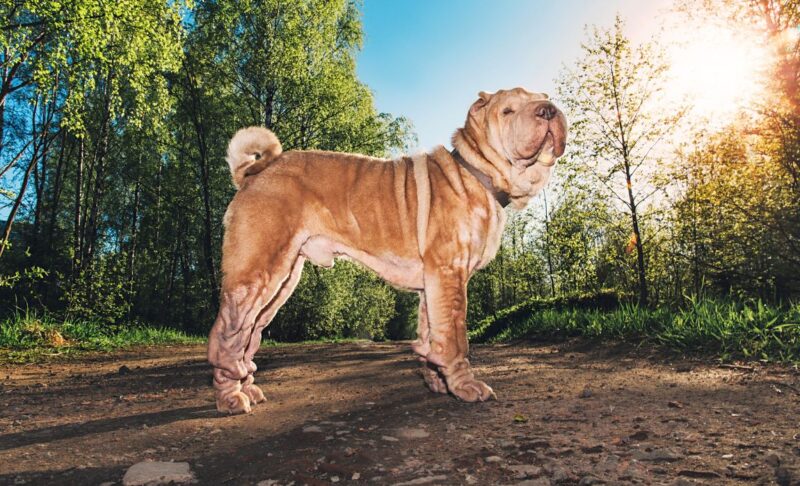
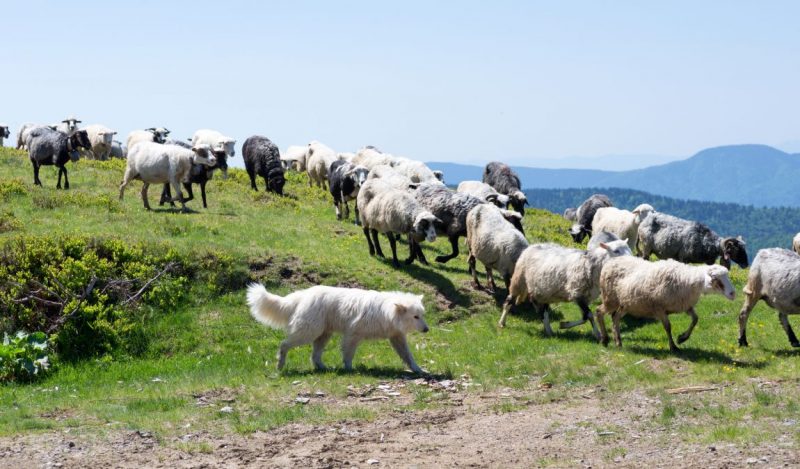
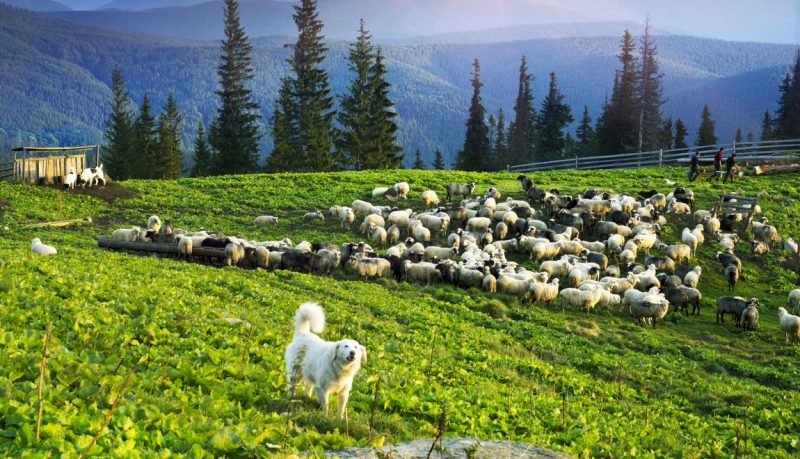
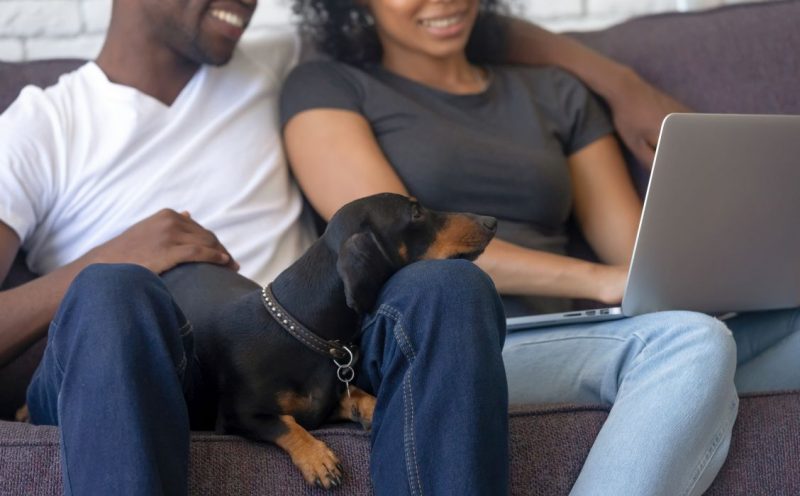
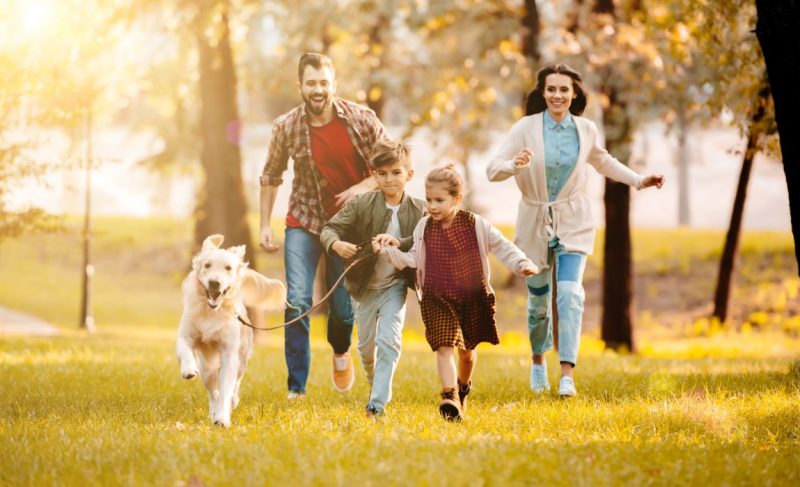

Leave a Comment